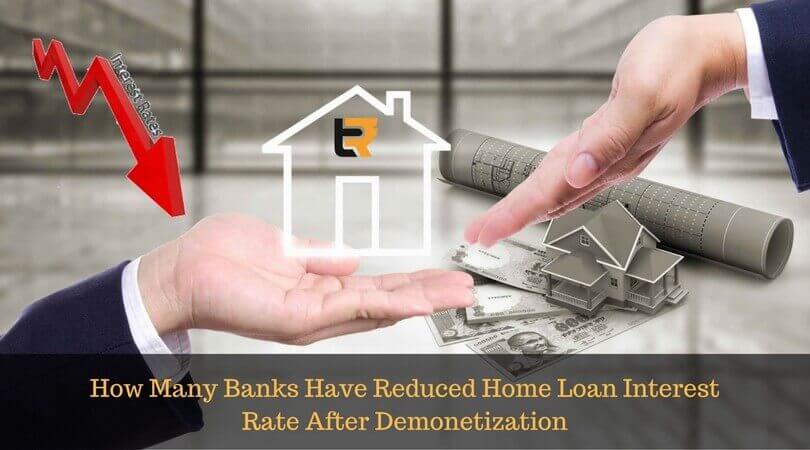Table of Content
But the latest rate drops the past few weeks have economists questioning whether this indicates a steady decline in 2023—or this is the calm before another storm of rate hikes. Keep all property related documents – It is very important to maintain and keep all the property documents with you. As it helps the lender identify your property and its worth properly and thus trust your profile. Property in a good location – Property in a approved society has more chance of getting loan amount up to 75-90% of the property value.

If the interest rate falls immediately after taking the home loan, the borrower may have to wait for one year for a revision, as most banks have home loans based on the 1-year MCLR rate. The home loan tenure normally ranges around 20 years, which is a very long period and even a small increase or decrease in interest rates, can have a significant impact on the overall cost of the property. As shown in the following table, a variation of 0.25% in the interest rate for a 20-year loan of Rs 30 lakhs, could impact the interest outgo by approximately Rs 1.14 lakhs. The exact amount that your interest rate is reduced depends on the lender, the type of loan, and the overall mortgage market. Sometimes you may receive a relatively large reduction in your interest rate for each point paid. Other times, the reduction in interest rate for each point paid may be smaller.
Project Finance & Structuring SBU
That’s why a mortgage rate lock is such a useful tool because it protects you if rates go up. And with interest rates being relatively low right now, you should lock in your rate as soon as you can. Use our mortgage calculator to see how your mortgage payment changes based on causes like your interest rate, loan term, and down payment.
The RBI had, in March, announced a three-month deferment on long-tenure loans, keeping in mind the Coronavirus spread in the country and its impact on people’s income. The RBI is unlikely to announce a rate cut in its next policy meeting scheduled for February 3-5, 2021, a report by Motilal Oswal Institutional Equities has indicated. According to the report, the apex bank will continue to maintain a cautious approach towards further easing, despite retail inflation showing a decline in December 2020.
Credit Card
“The benchmark one-year MCLR has been reduced by 15 bps to 8.5 per cent, as against 8.65 per cent earlier,” UCO Bank said in a statement. The one-year MCLR is the rate based on which the retail loans such as home, car and personal advances are linked, the lender said. UCO Bank is planning to link the rate of interest with the RBI’s repo rates, to pass on the benefit to customers. The infusion of Rs 70,000 crores in PSBs, along with various initiatives announced by the FM, will boost market sentiments and revive many sectors, particularly the automobile, MSME, consumer and retail sectors. Housing will get a big boost, with Rs 30,000-crore funds, including Rs 10,000 crores already given to the NHB, for refinance facility to HFCs.

The public sector bank Bank of Baroda hav increased its interest rate on home loan from 6.5% to 6.9%. Bank of India, on the other hand has also increased its home loan interest rates from 6.5% to 6.9%.India’s largest mortgage lender, HDFC has increased its prime lending rate by 30 basis points. Federal Bank’s home loan interest rate has gone up from 7.65% to 8.05%. When the RBI lowers the repo rate, the cost of borrowing for banks goes down.
How does the Federal Reserve affect mortgage rates?
For adjustable-rate mortgages, interest rates are fixed for a certain number of years , then the rate adjusts annually based on the market rate. Though the Fed does not directly set mortgage rates, the central bank's policy actions influence how much you pay to finance your home loan. If you're looking to buy a house, keep in mind that the Fed has signaled it will continue to raise rates into 2023, which would likely continue to drive mortgage rates upward. Mortgage rates have increased fairly consistently since the start of 2022, following in the wake of a series of interest rate hikes by the Federal Reserve. Interest rates are dynamic and unpredictable -- at least on a daily or weekly basis -- and they respond to a wide variety of economic factors. But the Fed's actions, designed to mitigate the high rate of inflation, are having an unmistakable impact on mortgage rates.

In a fixed rate loan wherein the interest rate is stable, the interest rate is higher than that of the floating rate home loan. Similar views are expressed by Dhruv Agarwala, group CEO, Housing.com, Makaan.com and Proptiger.com. “The RBI’s move to maintain status quo on policy rates was expected, in the face of persistently high retail inflation and an already record-low repo rate. Meanwhile, the non-conventional and conventional support measures offered by the apex bank, to support the Coronavirus-hit economy, have failed to reduce the government’s borrowing costs significantly, says a new study. The many measures by the RBI, at best, restrained a sharp spike like the one witnessed after the global financial crisis of 2020, they opined. Eligible borrowers can avail Home Loans with attractive interest rates on both floating and fixed rate loans, lower Equated Monthly Instalments and no pre-payment charges on floating loan rates.
Difference between repo rate and reverse repo rate
For the uninitiated, reverse repo rate is the rate at which the central bank borrows money from financial institutions in India. “Keeping in mind the current scenario, a slight reduction in the key rates would have been widely celebrated, as low interest rates have been a crucial factor in the revival of demand in the real estate sector. We have already seen early signs of improvement in economic activity, following the easing of some restrictions post the peak of the second wave,” said Lincoln Bennet Rodrigues, founder and chairman, Bennet & Bernard Group. Recall here that several banks have in the past two weeks have announced significant reductions in home loan interest rates to boost demand in the festive season. Among the banks that have made these reductions in the rates are Kotak Mahindra Bank, Bank of Baroda, State Bank of India, Punjab National Bank, YES Bank, ICICI Bank, HDFC Bank, LIC Housing Finance, etc. After being lowered by 115 basis points in early 2020, the repo rate — the rate at which the central bank lends short-term funds to banks — has been held at a record low of 4% since May 2020, when it was last last reduced.

LVR is the amount of your loan compared to the Bank’s valuation of your property offered to secure your loan expressed as a percentage. Home loan rates for new loans are set based on the initial LVR and won’t change during the life of the loan as the LVR changes. You can instantly check your current rate, repayments and balance by signing into the Westpac App or Online Banking and selecting your home loan account. Repayments aren’t affected by variable interest rate changes during your fixed rate term. Following the Reserve Bank of Australia (RBA’s) decision to increase the official cash rate, Westpac today announced a 0.25% per annum (p.a.) increase to our variable home loan interest rates, for new and existing home loans. As your home loan is linked to the RBI’s repo rate, if the interest rates come down, your EMI or tenure will reduce accordingly.
Rates on unusually small mortgages — a $50,000 home loan, for example — tend to be higher than average rates because these loans are less profitable to the lender. If you took out a $300,000 home loan with a 30-year fixed rate of 5.5%, you’d pay around $313,000 in total interest over the life of the loan. The same loan size with a 15-year fixed rate of just 5.0% would cost only $127,000 in interest — saving you around $186,000 in total. If possible, give yourself a few months or even a year to improve your credit score before borrowing. Rates plummeted in 2020 and 2021 in response to the Coronavirus pandemic.
The daily rates survey focuses on home loans where the borrower has a 740+ credit score, a loan-to-value ratio of 80% or better, and the home is a primary residence. The RBI cannot offer higher interest on deposits and charge lower interest on loans. This is why the repo rate, the interest it charges from banks to lend money, is higher than the reverse repo rate, the interest it pays on deposits. Repo rate is the interest the RBI charges on banks, to lend money to them.

No comments:
Post a Comment